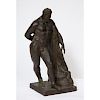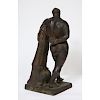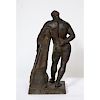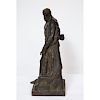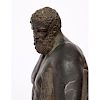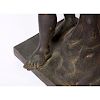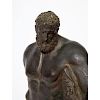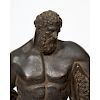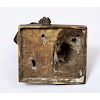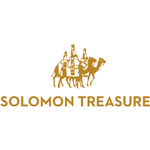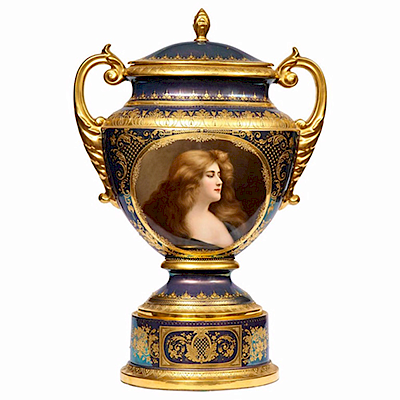Italian Grand Tour Bronze Sculpture of Farnese Hercules, circa 18th Century
Lot 177
About Seller
Solomon Treasure
1050 2nd Ave #83
NY, NY 10022
United States
Four Generations of collecting exquisite European Art & Antiques.
Categories
About Auction
By Solomon Treasure
Sep 13, 2019 - Oct 17, 2019
Set Reminder
2019-09-13 12:00:00
2019-10-17 13:00:00
America/New_York
Bidsquare
Bidsquare : 19th-20th Century Decorative Arts
https://www.bidsquare.com/auctions/solomon-treasure/19th-20th-century-decorative-arts-4452
19th-20th Century Decorative Arts. Exceptional lots of French furniture, objects of art, and gorgeous opulent decor for the home. Solomon Treasure mory@solomontreasureny.com
19th-20th Century Decorative Arts. Exceptional lots of French furniture, objects of art, and gorgeous opulent decor for the home. Solomon Treasure mory@solomontreasureny.com
- Lot Description
Italian Grand Tour Bronze Sculpture of Farnese Hercules, circa 18th Century, Very good quality and condition. 14"" high x 6"" wide x 5.5"" deep The Farnese Hercules (Italian: Ercole Farnese) is an ancient statue of Hercules, probably an enlarged copy made in the early third century AD and signed by Glykon, who is otherwise unknown; the name is Greek but he may have worked in Rome. Like many other Ancient Roman sculptures it is a copy or version of a much older Greek original that was well known, in this case a bronze by Lysippos (or one of his circle) that would have been made in the fourth century BC. The enlarged copy was made for the Baths of Caracalla in Rome (dedicated in 216 AD), where the statue was recovered in 1546, and is now in the Museo Archeologico Nazionale in Naples. The heroically-scaled Hercules is one of the most famous sculptures of antiquity, and has fixed the image of the mythic hero in the European imagination. The Farnese Hercules is a massive marble statue, following a lost original cast in bronze through a method called lost wax casting. It depicts a muscular, yet weary, Hercules leaning on his club, which has the skin of the Nemean lion draped over it. In myths about Heracles, killing the lion was his first task. He has just performed one of the last of The Twelve Labours, which is suggested by the apples of the Hesperides he holds behind his back. The type was well known in antiquity, and among many other versions a Hellenistic or Roman bronze reduction, found at Foligno is in the Musée du Louvre. A small Roman marble copy can be seen in the Museum of the Ancient Agora, Athens
Dimension
Height: 20.00 inWidth: 31.00 inDepth: 24.00 inDepth: 24.00 inGoodCondition
- Shipping Info
-
Shipping will be handled in-house.
-
- Payment & Auction Policies
-
Available payment options
-



 EUR
EUR CAD
CAD AUD
AUD GBP
GBP MXN
MXN HKD
HKD CNY
CNY MYR
MYR SEK
SEK SGD
SGD CHF
CHF THB
THB

